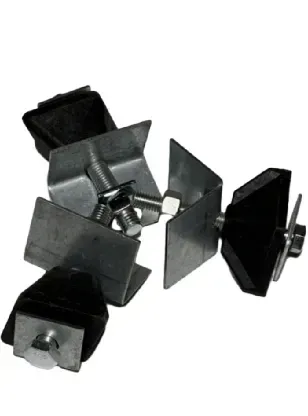loading...
- No. 9, Xingyuan South Street, Dongwaihuan Road, Zaoqiang County, Hengshui, Hebei, China
- admin@zjcomposites.com
- +86 15097380338
- Welcome to visit our website!
frp handrails
The Benefits of FRP Handrails in Modern Construction
In contemporary construction, safety and durability are paramount concerns. One of the materials gaining prominence for safety features in buildings and infrastructure is Fiber Reinforced Polymer (FRP). FRP handrails are increasingly being recognized for their strength, lightweight nature, and resistance to environmental factors. This article explores the benefits and applications of FRP handrails in various sectors.
The Benefits of FRP Handrails in Modern Construction
One of the most significant advantages of FRP handrails is their resistance to environmental factors. In coastal areas where saltwater exposure can lead to rapid deterioration of traditional metal handrails, FRP provides excellent performance. Its non-conductive properties also make it suitable for electrical environments, reducing the risk of accidental electrocution. As a result, FRP handrails are increasingly used in power generation facilities, chemical plants, and other industrial sites where safety is critical.
frp handrails

Safety is of utmost importance in public spaces, and FRP handrails are designed with this in mind. They can be manufactured to meet specific building codes and safety standards, making them suitable for various environments. The flexibility in design also allows for customized solutions, ensuring that these handrails can fit perfectly into the aesthetic schematics of any space. The option to choose bright colors increases visibility, reducing the risk of accidents.
Another key feature of FRP handrails is their lightweight nature. This property simplifies the installation process, allowing for quicker project completion and reduced labor costs. Unlike heavy metal railings that require intricate structural support, FRP can often be installed directly onto the substrate, making it easier to work with, especially in high-rise buildings or complicated architectural designs.
In addition, the cost-effectiveness of FRP handrails cannot be overlooked. Though the initial investment may be higher than traditional materials, the long-term savings in maintenance, repair, and replacement often make FRP the more economical choice. Their durability ensures that they remain in service longer without the need for frequent repairs, providing peace of mind for facility managers and homeowners alike.
In conclusion, FRP handrails represent a progressive step in building safety and design. Their unique combination of strength, lightweight properties, and resistance to corrosion and environmental factors makes them an excellent choice for a wide range of applications. As modern construction continues to focus on sustainable and safe solutions, the adoption of FRP handrails will likely grow, paving the way for a safer built environment for everyone. Whether in residential, commercial, or industrial settings, FRP handrails promise to enhance safety and longevity, making them a smart investment in any construction project.
-
The Rise of FRP Profiles: Strong, Lightweight, and Built to LastNewsJul.14,2025
-
SMC Panel Tanks: A Modern Water Storage Solution for All EnvironmentsNewsJul.14,2025
-
GRP Grating: A Modern Solution for Safe and Durable Access SystemsNewsJul.14,2025
-
Galvanized Steel Water Tanks: Durable, Reliable, and Ready for UseNewsJul.14,2025
-
FRP Mini Mesh Grating: The Safer, Smarter Flooring SolutionNewsJul.14,2025
-
Exploring FRP Vessels: Durable Solutions for Modern Fluid HandlingNewsJul.14,2025
-
GRP Structures: The Future of Lightweight, High-Performance EngineeringNewsJun.20,2025
